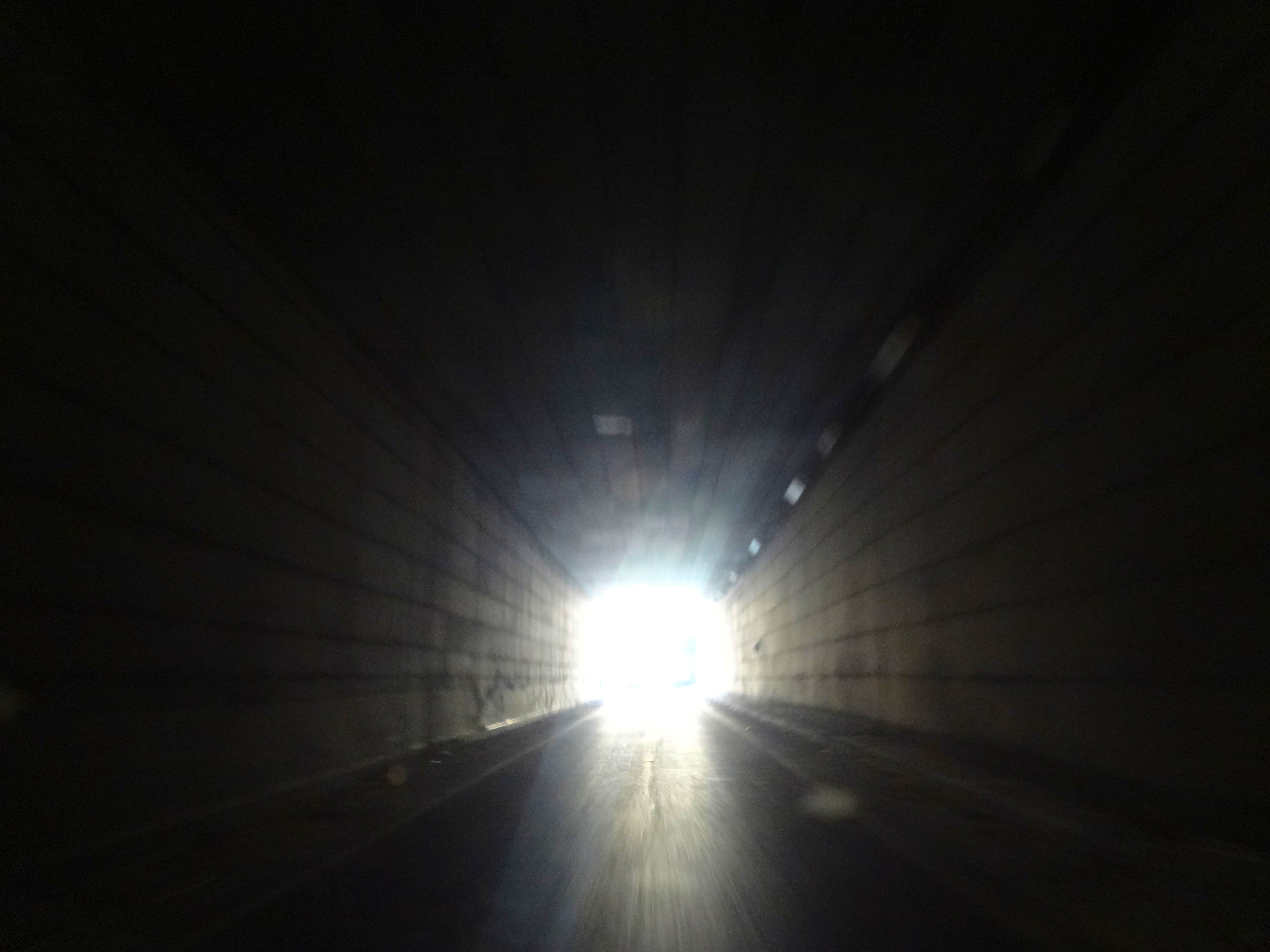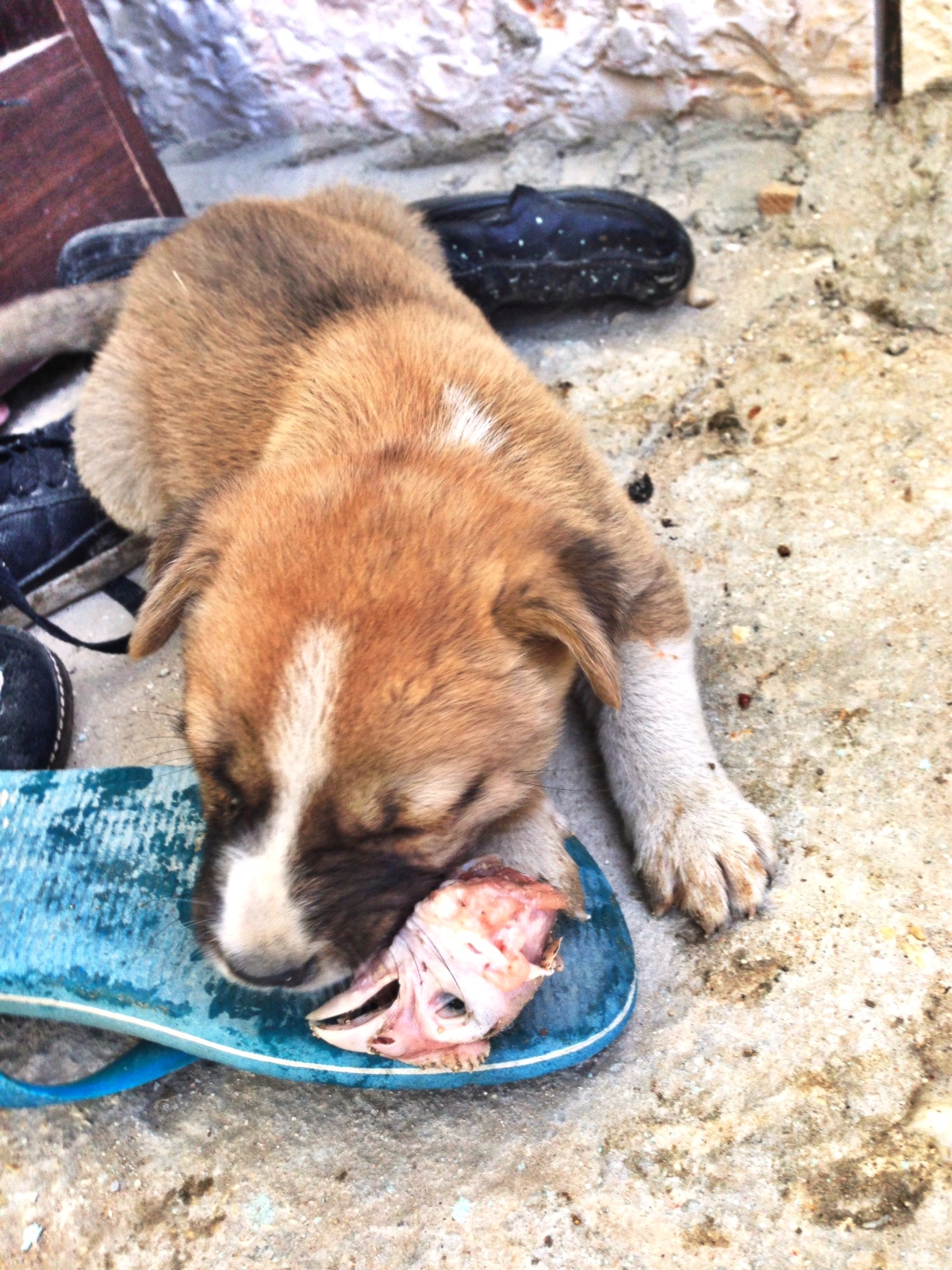That’s Not Light You See

It’s Wednesday, I know, a ridiculous day for such thoughts, but out on the morning jog I couldn’t stop thinking about Kant. I tried the weather (it’s hot, again) and the news, but nothing stuck. (Tell me: is it absurd to admire Glenn Greenwald even more because his boyfriend is cute?) So: Kant, the categorical imperative, Wednesday morning, hot again, how fucked it is that the ethical should be grounded in something so arrogant and yes, imperialist, as the universalization of the petty, stunted self, how narrow and how closed a system. Isn’t the whole point not to smother everything with the awful, cloying sameness of self, to blast the whole thing open? The self, I mean, and Wednesday too. I don’t know how yet, but I’m trying.
I took this photo two days ago while driving through a tunnel, the longest in the West Bank. A kilometer and a half of concrete, really quite an achievement. The tunnel separates (or, for the optimists out there, connects) the villages of Bidu and al Jeeb, just southwest of Ramallah and north of Jerusalem. Once, you could walk to Jerusalem from here. There’s a wall now, or really several walls. The tunnel is now the sole entrance to Bidu and hence to the seven villages beyond it which have been collectively fenced off, not only from Jerusalem, but from the rest of the West Bank. Which means a single military jeep can, and sometimes does, shut off those villages entirely, locking them down. A prison by another name. How bright the sun is! The tunnel passes under what were once Palestinian agricultural lands, confiscated in the 1980s by surrounding Israeli settlements, and under Highway 443, which connects Jerusalem and Tel Aviv and extends into the settlement corridor of the central West Bank. From 2002 to until 2010, Israel prohibited Palestinian cars from traveling on 443. Theoretically, a Supreme Court decision that year opened the road to all, but, because there are so few access points open to Palestinians (residents of Bidu would have to climb, or tunnel upwards), the road remains largely segregated, a sort of horizontal, asphalt settlement. I haven’t mentioned, have I, the house I visited in Beit Ijza, one village over, that has been completely fenced off from its neighbors, that has its own wall, its own gate, a single-family prison? There is a world, I guarantee you, in which this sort of thing makes sense, is rational, moral, right. It’s right out there, on the other side of the wall.
The church in al Bassa
We parked outside the technical college in the town that is now called Shlomi, a few miles east of the Mediterranean and just south of the border with Lebanon. It was midday and hot and the streets were empty. The buildings were like any buildings: low, dull, corporate. There was a textile factory too, and the offices of a medical insurance company, the streets well-paved, everything trim and groomed except for the chaos of thistle and blackberries and figs around the ruins of the old Orthodox church and the Muslim shrine and the old stone house between them with its six high arched windows. I climbed through the rubble into the shrine and I stood beneath its dome. The floor was littered with trash and broken stone, the ashes of a fire. The church’s door had been boarded up, its windows half-bricked over with concrete blocks, but someone had piled rocks beneath one window at the back of the building and I was able to reach the ledge and hoist myself up by the bars. Inside, I could see that the floor of the church was empty save a single wooden table in the middle of the nave and a pile of white boulders where the altar had once stood. The plaster coating the vaulted ceiling was stained and cracked and chipping away in welts, revealing the brickwork beneath. I took pictures.
Shlomi didn’t become Shlomi until 1950. Before that it was al Bassa, a prosperous Palestinian town of more than 3,000 people, almost evenly split between Christians and Muslims. I learned this later. I read up. Al Bassa had been a center of resistance, I learned, first against the British during the Arab Revolt of 1936 to 1939 and later in 1948, when local militiamen took part in an attack on a caravan of Haganah troops. (This occurred just before the paramilitary Haganah was formally reorganized as the Israeli army.) More soldiers arrived in May of that year as part of Operation Ben Ami. Their orders: “to attack for the sake of occupation … to kill the men, destroy and set fire.” In a little more than a day, most of the villages in the west of the Upper Galilee had been emptied of their occupants. (The rhetoric of conquest varies little over time: David Ben Gurion told the legislature of the newly declared state of Israel that “The Western Galilee has been liberated.”) But al Bassa, Ilan Pappe writes, took a little longer to subdue, and was for that reason punished more severely. According to one version, all the young men were lined up in front of the church and shot. The women were ordered to bury their brothers, husbands and sons, and leave the village. In other accounts the massacre took place inside the church. Later, soldiers destroyed all but a few of the 700 houses in al Bassa. The technical college was built atop two cemeteries, one of them Christian, the other Muslim.
Did I mention that the giant, sprawling fig trees to the left of the church were diseased, their leaves coated with thick, green, fungal growths? Or that the whole time I was there the air stank of grease and roasting meat and the tang of decay from the chicken processing plant across the street? I could hear the whirring of the plant’s giant fans and the beeping of forklifts reversing across the lot. On the roof, a worker hid out in a shady spot and smoked a cigarette, watching me watching him.
Wave Theory

"...it is very difficult to isolate one wave, separating it from the wave immediately following it, which seems to push it and at times overtakes it and sweeps it away; just as it is difficult to separate that one wave from the wave that precedes it and seems to drag it towards the shore, unless it turns against its follower as if to arrest it. Then if you conside the breadth of the wave, parallel to the shore, it is hard to decide where the advancing front extends regularly and where it is separated and segmented into independent waves, distinguished by their speed, shape, force, direction.
"In other words, you cannot observe a wave without bearing in mind the complex features that concur in shaping it and the other, equally complex ones that the wave itself originates. These aspects vary constantly ..."
—Italo Calvino, Mr. Palomar
 b.
b.
